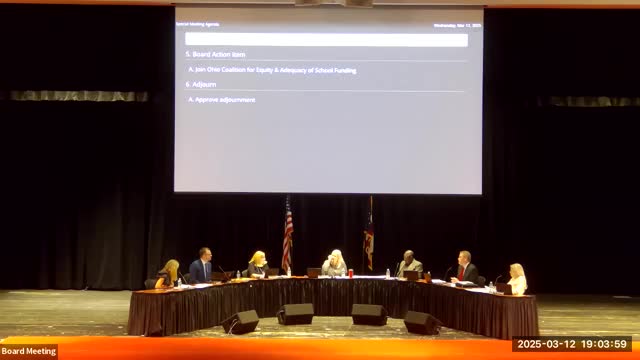Lakota schools project $217M revenue for FY25 amid funding complexities
March 24, 2025 | Lakota Local, School Districts, Ohio
This article was created by AI summarizing key points discussed. AI makes mistakes, so for full details and context, please refer to the video of the full meeting. Please report any errors so we can fix them. Report an error »

In a recent special meeting of the Lakota Board of Education, held on March 12, 2025, key discussions centered around the district's funding structure and the implications of student vouchers on local finances. The atmosphere was charged with a sense of urgency as board members and representatives delved into the complexities of school funding, particularly how state, local, and federal dollars are allocated.
One of the pivotal points raised was the impact of student vouchers on the district's revenue. It was clarified that when students opt for private schooling using vouchers, only the state funding follows them, while local property taxes and federal funds remain with Lakota. This means that for every student who leaves for a private institution, the district retains significant financial resources, even though it is no longer educating those students. This arrangement has sparked discussions about the efficiency of the funding model, especially as the district continues to provide services for students who may be attending other schools.
The board also highlighted the district's financial growth, with total revenue projected to reach $217 million in fiscal year 2025, a notable increase from $192.7 million in 2022. This growth is attributed to rising local tax resources and a modest increase in state funding. However, the board members expressed concerns about the disparities in funding distribution, particularly under the Fair School Funding Plan, which designates Lakota as a district capable of raising wealth locally. As a result, the state share of funding for Lakota is significantly lower compared to less affluent districts, with projections indicating a drop to just 10% in the coming years.
The meeting underscored the complexities of school funding in Ohio, where local property values and tax revenues play a crucial role in determining financial support for education. Board members acknowledged the challenges posed by the current funding formula, emphasizing the need for a more equitable approach that considers the diverse economic landscapes of different districts.
As the meeting concluded, the board members expressed gratitude for the participation of community representatives and reiterated their commitment to transparency and collaboration. The discussions not only illuminated the financial realities facing Lakota but also set the stage for future conversations about how to best serve the educational needs of all students in the district.
One of the pivotal points raised was the impact of student vouchers on the district's revenue. It was clarified that when students opt for private schooling using vouchers, only the state funding follows them, while local property taxes and federal funds remain with Lakota. This means that for every student who leaves for a private institution, the district retains significant financial resources, even though it is no longer educating those students. This arrangement has sparked discussions about the efficiency of the funding model, especially as the district continues to provide services for students who may be attending other schools.
The board also highlighted the district's financial growth, with total revenue projected to reach $217 million in fiscal year 2025, a notable increase from $192.7 million in 2022. This growth is attributed to rising local tax resources and a modest increase in state funding. However, the board members expressed concerns about the disparities in funding distribution, particularly under the Fair School Funding Plan, which designates Lakota as a district capable of raising wealth locally. As a result, the state share of funding for Lakota is significantly lower compared to less affluent districts, with projections indicating a drop to just 10% in the coming years.
The meeting underscored the complexities of school funding in Ohio, where local property values and tax revenues play a crucial role in determining financial support for education. Board members acknowledged the challenges posed by the current funding formula, emphasizing the need for a more equitable approach that considers the diverse economic landscapes of different districts.
As the meeting concluded, the board members expressed gratitude for the participation of community representatives and reiterated their commitment to transparency and collaboration. The discussions not only illuminated the financial realities facing Lakota but also set the stage for future conversations about how to best serve the educational needs of all students in the district.
View full meeting
This article is based on a recent meeting—watch the full video and explore the complete transcript for deeper insights into the discussion.
View full meeting
